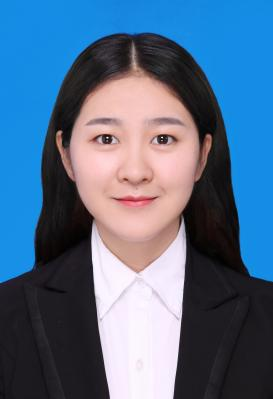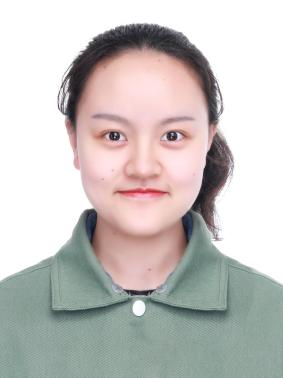
Yun Shi
Ph.D., Principal Investigator,Professor, Senior Investigator
Email: shiyun@@gdiist.cn
Personal Profile
Yun Shi received PhD degree in physiology at Georgia State University in 2007. His PhD work focused on the function and regulation of vascular KATP channels. He then had postdoctoral training with Dr. Roger Nicoll in UCSF where he worked on synaptic plasticity. In 2013, he joined the Model Animal Research Center, Nanjing University as a professor and principal investigator. Since 2022, he has been a senior investigator and research group leader in Guangdong Institute of Intelligent Science and Technology. He was awarded the Overseas High level Excellent Youth Talent Plan, Jiangsu Mass Entrepreneurship and Innovation Talent Plan and Jiangsu Outstanding Youth. His research interest is engaged in the mechanism of synaptic transmission and plasticity. Professor Yun Shi presided 5 NSFC funded projects and took part in 3 projects of the Ministry of Science and Technology as well as other research grants. He has been coauthored over 80 research articles in biomedical journals such as Nature, Neuron, Cell Discovery, Molecular Psychiatry, Nature Communications, PNAS etc.
Laboratory of Cognitive Neural Network and Plasticity
Our research is engaged in the central excitatory neurotransmitter system to study synaptic transmission and plasticity. We study postsynaptic glutamate receptors and auxiliary subunits, including their molecular composition, structure, functional regulation, synthesis and trafficking mechanisms. Recently, our research interests have been extended to cognitive disorders associated with mutations in glutamate receptors in humans. Accordingly, we build animal models to understand the relationship between synaptic disorder and neurocognitive diseases.
Another direction of the research group is about the interoceptions, including thirst, satiety sensation, blood pressure detection, and urinary intention, etc. The interoceptions, which mostly involve the sensation of the machinery and chemical signals in inner environment, are encoded by specific neural network system. Our recent work revealed TMEM63 family channels are a novel class of mechanosensitive and osmosensitive cation channels playing a key role in detecting inner osmolarity for thirsty, or controlling the secretion of glandular cells. Future research will stem out on the physiological functions of the TMEM63 family channels and the encoding and decoding of signals from the internal sensory system.
Representative publications
1. Teng XY, Hu P, Zhang CM, Zhang QX, Yang G, Zang YY, Liu ZX, Chen G, Shi YS. (2024) OPALIN is an LGI1 receptor promoting oligodendrocyte differentiation. PNAS. 121(32):e2403652121.
2. Yang G, Jia M, Li G, Zang YY, Chen YY, Wang YY, Zhan SY, Peng SX, Wan G, Li W, Yang JJ, Shi YS. (2024) TMEM63B Channel Is the Osmosensor Required for Thirst Drive of Interoceptive Neurons. Cell Discovery, 10(1):1
3. Shi T, Shen S, Shi Y, Wang Q, Zhang G, Lin J, Chen J, Bai F, Zhang L, Wang Y, Gong W, Shao X, Chen G, Yan W, Chen X, Ma Y, Zheng L, Qin J, Lu K, Liu N, Xu Y, Shi YS, Jiang Q, Guo B (2024) Osteocyte-derived sclerostin impairs cognitive function during ageing and Alzheimer's disease progression. Nature Metabolism, Online ahead of print.
4. Rinaldi B, Bayat A, Zachariassen LG, Sun JH, Ge YH, Zhao D, Bonde K, Madsen LH, Awad IAA, Bagiran D, Sbeih A, Shah SM, El-Sayed S, Lyngby SM, Pedersen MG, Stenum-Berg C, Walker LC, Krey I, Delahaye-Duriez A, Emrick LT, Sully K, Murali CN, Burrage LC, Plaud Gonzalez JA, Parnes M, Friedman J, Isidor B, Lefranc J, Redon S, Heron D, Mignot C, Keren B, Fradin M, Dubourg C, Mercier S, Besnard T, Cogne B, Deb W, Rivier C, Milani D, Bedeschi MF, Di Napoli C, Grilli F, Marchisio P, Koudijs S, Veenma D, Argilli E, Lynch SA, Au PYB, Ayala Valenzuela FE, Brown C, Masser-Frye D, Jones M, Patron Romero L, Li WL, Thorpe E, Hecher L, Johannsen J, Denecke J, McNiven V, Szuto A, Wakeling E, Cruz V, Sency V, Wang H, Piard J, Kortüm F, Herget T, Bierhals T, Condell A, Zeev BB, Kaur S, Christodoulou J, Piton A, Zweier C, Kraus C, Micalizzi A, Trivisano M, Specchio N, Lesca G, Møller RS, Tümer Z, Musgaard M, Gerard B, Lemke JR, Shi YS, Kristensen AS.(2023) Gain-of-function and loss-of-function variants in GRIA3 lead to distinct neurodevelopmental phenotypes. Brain, Online ahead of print.
5. Qin Y, Yu D, Wu D, Dong J, Li WT, Ye C, Cheung KC, Zhang Y, Xu Y, Wang Y, Shi YS, Dang S. (2023) Cryo-EM structure of TMEM63C suggests it functions as a monomer. Nature Communications, 14(1):7265.
6. Peng SX, Pei J, Rinaldi B, Chen Jiang, Ge YH, Jia M, Wang J, Delahaye-Duriez A, Sun J, Zang YY, Shi YY, Zhang N, Gao X, Milani D, Xu X, Sheng N, Gerard B, Chen Zhang C, Bayat A, Liu N, Yang JJ, Shi YS. (2022) Dysfunction of AMPA receptor GluA3 is associated with aggressive behavior in human. Mol Psychiatry, 27(10):4092-4102.
7. Li QQ, Chen J, Hu P, Jia M, Sun JH, Feng HY, Qiao FC, Zang YY, Shi YY, Chen G, Sheng N, Xu Y, Yang JJ, Xu Z, Shi YS. (2022) Enhancing GluN2A-type NMDA receptors impairs long-term synaptic plasticity and learning and memory. Mol Psychiatry, 27(8):3468-3478.
8. He L, Sun J, Gao Y, Li B, Wang Y, Dong Y, An W, Li H, Yang B, Ge Y, Zhang XC, Shi YS, Zhao Y. (2021) Kainate receptor modulation by Neto2. Nature, 599(7884):325-329.
9. Jiang CH, Wei M, Zhang C, Shi YS. (2021) The amino-terminal domain of GluA1 mediates LTP maintenance via interaction with neuroplastin-65. PNAS,118(9):e2019194118.
10. Du H, Ye C, Wu D, Zang YY, Zhang L, Chen C, He XY, Yang JJ, Hu P, Xu Z, Wan G, Shi SY. (2020) The cation channel TMEM63B is an osmosensor required for hearing. Cell Reports, 31:107596.
11. Duan GF, Xu S, Ye Y, Tao W, Nicoll RA,Shi YS, and Sheng N.(2018) Signal peptide represses GluK1 surface and synaptic trafficking through binding to amino-terminal domain. Nature Communications, 9(1):4879.
12. Sheng N, Bemben MA, Díaz-Alonso J, Tao W, Shi YS, Nicoll RA. (2018) LTP requires postsynaptic PDZ-domain interactions with glutamate receptor/auxiliary protein complexes. PNAS, 115(15):3948-3953.
13. Sheng N, Shi YS, Nicoll RA. (2017) The amino-terminal domains of kainate receptors determine the differential dependence on Neto auxiliary subunits for trafficking. PNAS, 114(5):1159-1164.
14. Niu Y, Dai Z, Liu W, Zhang C, Yang Y, Guo Z, Li X, Xu C, Huang X, Wang Y, Shi YS, Liu JJ. (2017) Ablation of SNX6 leads to defects in synaptic function of CA1 pyramidal neurons and spatial memory. eLife, 6. pii: e20991.
15. He XY, Li YJ, Kalyanaraman C, Qiu LL, Chen C, Xiao Q, Liu WX, Zhang W, Yang JJ, Chen G, Jacobson MP, Shi YS. (2016) GluA1 signal peptide determines the spatial assembly of heteromeric AMPA receptors. PNAS, 113(38):E5645-54.
16. Granger AJ, Shi Y, Lu W, Cerpas M, Nicoll RA. (2013) LTP requires an extrasynaptic pool of glutamate receptors independent of subunit type. Nature, 493(7433),495-500
17. Herring B, Shi Y, Suh YH, Zheng CY, Schmid SM, Roche KW, Nicoll RA. (2013) Cornichon proteins determine the subunit composition of synaptic AMPA receptors. Neuron, 77(6),1083-96
18. Gray JA, Shi Y, Usui H, During MJ, Sakimura K, Nicoll RA. (2011) Distinct modes of AMPA receptor suppression at developing synapses by GluN2A and GluN2B: analysis of single-cell GluN2 subunit deletion in vivo. Neuron, 71(6), 1085-1101
19. Shi Y, Suh YH, Milstein AD, Isozaki K, Schmid SM, Roche KW, Nicoll RA. (2010) Functional comparison of the effects of TARPs and cornichons on AMPA receptor trafficking and gating. PNAS, 107(37), 16315-16319
20. Shi Y, Lu W, Milstein AD, Nicoll RA. (2009) The stoichiometry of AMPA receptors and TARPs varies by neuronal cell types. Neuron, 62(5), 633-40
21. Lu W, Shi Y, Jackson A, Bjorgan K, During MJ, Sprengel R, Seeburg PH, Nicoll RA. (2009) Subunit composition of synaptic AMPA receptors revealed by a single-cell genetic approach. Neuron, 62(2), 254-68















